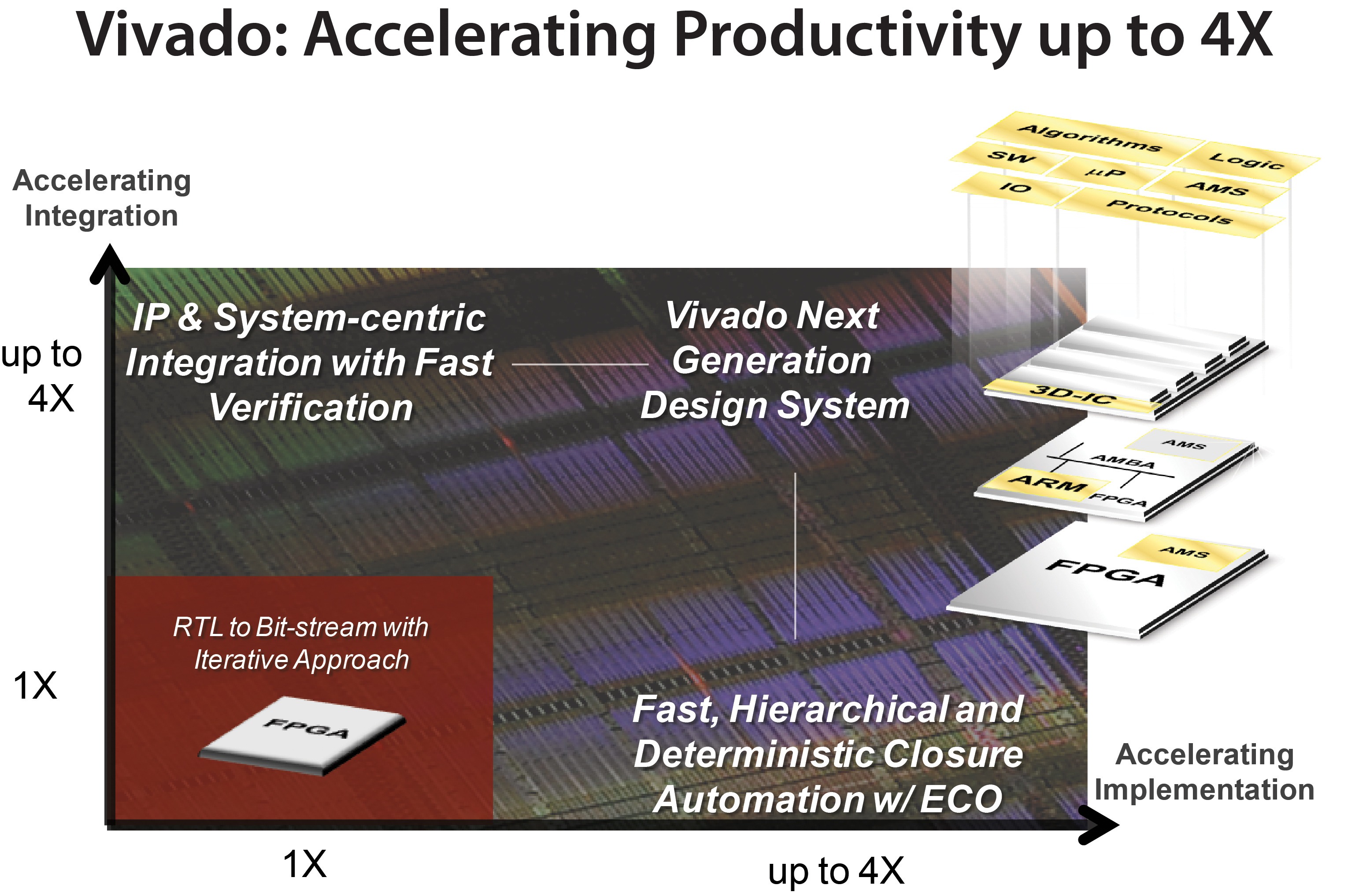Designing FPGAs Using the Vivado Design Suite 1
Course Description
This course offers introductory training on the Vivado® Design Suite and helps you to understand the FPGA design flow.
The course provides experience with:
- Creating a Vivado Design Suite project with source files
- Simulating a design
- Performing pin assignments
- Applying basic timing constraints
- Synthesizing and implementing
- Debugging a design
- Generating and downloading a bitstream onto a demo board
 Level
Level
FPGA 1
Course Duration
2 days
Audience
Digital designers new to FPGA design who need to learn the FPGA design.cycle and the major aspects of the Vivado Design Suite
Prerequisites
- Basic knowledge of the VHDL or Verilog language
- Digital design knowledge
Software Tools
- Vivado Design Suite 2022.1
Hardware
- Architecture: UltraScale™ and UltraScale+ FPGAs*
- Demo board (optional): Zynq UltraScale+ ZCU104 board*
* This course focuses on the UltraScale and UltraScale+ architectures. Check with your local Authorized Training Provider for the specifics of the in-class lab board or other customizations.
Skills Gained
After completing this comprehensive training, you will have the necessary skills to:
- Use the New Project Wizard to create a new Vivado IDE project
- Describe the supported design flows of the Vivado IDE
- Generate a DRC report to detect and fix design issues early in the flow
- Use the Vivado IDE I/O Planning layout to perform pin assignments
- Explore synthesis and implementation options and directives
- Synthesize and implement the HDL design
- Apply clock and I/O timing constraints and perform timing analysis
- Describe the “baselining” process to gain timing closure on a design
- Use the Schematic and Hierarchy viewers to analyze and cross-probe a design
- Use the Vivado logic analyzer and debug flows to debug a design
Course Outline
Day 1
- Introduction to FPGA Architecture, 3D IC, SoC, ACAPs –Overview of FPGA architecture, SSI technology, and SoC device architecture. {Lecture}
- UltraFast Design Methodology: Board and Device Planning –Introduces the methodology guidelines covered in this course and the UltraFast Design Methodology checklist. {Lecture}
- HDL Coding Techniques –Covers basic digital coding guidelines used in an FPGA design. {Lecture}
- Introduction to Vivado Design Flows –Introduces the Vivado design flows: the project flow and non-project batch flow. {Lecture}
- Vivado Design Suite Project Mode –Create a project, add files to the project, explore the Vivado IDE, and simulate the design. {Lecture, Lab}
- Basic Design Analysis in the Vivado IDE –Use the various design analysis features in the Vivado Design Suite. {Lab, Demo}
- Vivado Design Rule Checks –Run a DRC report on the elaborated design to detect design issues early in the flow. Fix the DRC violations. {Lab}
- Introduction to Vivado Reports –Generate and use Vivado timing reports to analyze failed timing paths. {Lecture, Demo}
- Behavioral Simulation -Performs behavioral simulation for your design. {Lecture}
- Xilinx Power Estimator Spreadsheet –Estimate the amount of resources and default activity rates for a design and evaluate the estimated power calculated by XPE. {Lecture, Lab}
- Power Estimation Using the XPE Tool for Versal ACAPs Describe how to use the Xilinx Power Estimator (XPE) spreadsheet tool for the Versal ACAP architecture {Lab}
- Synthesis and Implementation –Create timing constraints according to the design scenario and synthesize and implement the design. Optionally, generate and download the bitstream to the demo board. {Lecture, Lab}
Day 2
- Vivado IP Flow –Customize IP, instantiate IP, and verify the hierarchy of your design IP. {Lecture, Lab, Demo}
- Vivado Design Suite I/O Pin Planning –Use the I/O Pin Planning layout to perform pin assignments in a design. {Lecture, Lab}
- Introduction to Clock Constraints –Apply clock constraints and perform timing analysis. {Lecture, Lab, Demo}
- Generated Clocks –Use the report clock networks report to determine if there are any generated clocks in a design. {Lecture, Demo}
- I/O Constraints and Virtual Clocks –Apply I/O constraints and perform timing analysis. {Lecture, Lab}
- Timing Constraints Wizard –Use the Timing Constraints Wizard to apply missing timing constraints in a design. {Lecture, Lab}
- Introduction to Vivado Reports –Generate and use Vivado timing reports to analyze failed timing paths. {Lecture}
- Setup and Hold Timing Analysis –Understand setup and hold timing analysis. {Lecture}
- Introduction to FPGA Configuration –Describes how FPGAs can be configured. {Lecture}
- Introduction to the Vivado Logic Analyzer –Overview of the Vivado logic analyzer for debugging a design. {Lecture, Demo}
- Introduction to Triggering –Introduces the trigger capabilities of the Vivado logic analyzer. {Lecture}
- Debug Cores –Understand how the debug hub core is used to connect debug cores in a design. {Lecture}
- Introduction to the Tcl Environment –Introduces Tcl (tool command language). {Lecture, Lab}
- Using Tcl Commands in the Vivado Design Suite Project Flow –Explains what Tcl commands are executed in a Vivado Design Suite project flow. {Lecture}
- Tcl Syntax and Structure –Understand the Tcl syntax and structure. {Lecture, Demo}

Datum
07 november 2022 - 08 november 2022
Locatie
Core|Vision
Cereslaan 24
5384 VT
Heesch
Prijs
€ 0,00
of
20 Xilinx Training Credits
Informatie
Training brochure
Registratieformulier
Registratie op aanvraag, neem contact op met ons.
